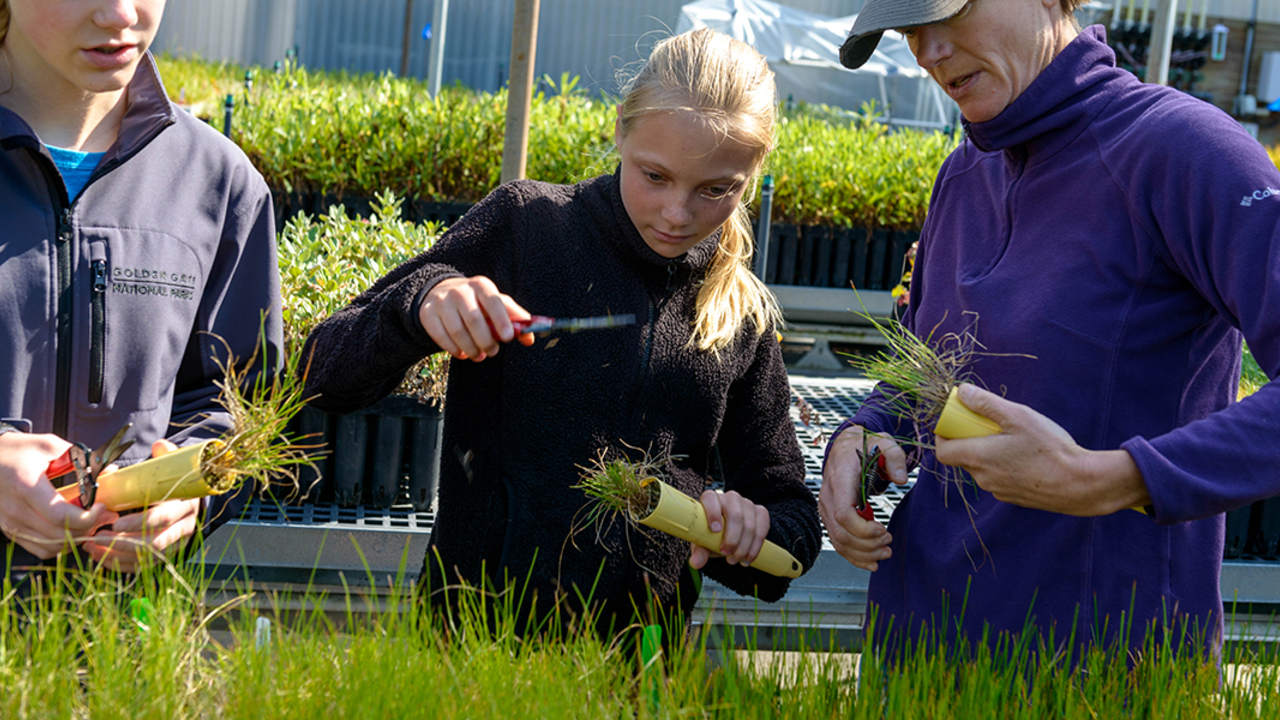Soap Plant, Soap Root
(Chlorogalum pomeridianum)

Eric Poelzl/Parks Conservancy
Endangered
No
Latin derivation
Genus: Chlorogalum - derived from Greek chloros, “green,” and gala, “milk or juice.”
Species: pomeridianum - means “of the afternoon", and refers to the flowers appearing during that time.
Family Characteristics
Liliaceae, the Lily Family. Leaves generally basal, linear, and alternate. Growing from bulb, corm, rhizome. From perennial to trees. Inflorescences generally bracted. Flowers generally bisexual, radial, perianth segments generally six in two petal-like whorls, six stamens, superior ovary. Fruit is capsule. ~4,600 species worldwide.
Description
Grows from bulb- 7-15cm tall, with coarse, fibrous thick coat. Leaves 20-70cm tall, 6-25 mm wide, with generally wavy margins growing in late winter to early spring. Inflorescence is highly branched with pedicals <40cm tall, spreading widely from base. Single tout and leafless flower stem. Flowers bloom in later spring, open in evenings, closed by morning, radial, about six petals and sepals, white, linear flower petals with green or purple mid-veins, often completely curled. Anthers are purple to yellow, ~2mm tall. Fruit is ~5-7mm, slightly lobed. Green and black capsules. Blooms May-June.
Habitat
Coastal bluffs, grasslands, chaparral, oak woodlands, <100m.
Ethnobotanical Information
Both the Native Americans and the early Spanish-Californians found many uses for the bulb or root -- both fresh and cooked: As the name hints, when the coating is removed and the bulb is crushed and rubbed on hands or clothes in water, it creates a fine lather for washing body and garments (including delicate fabrics!). The bulb’s properties are also gentle enough that it can be used for a good shampoo. The crushed bulb can be rubbed on the body to relieve rheumatic pains and cramps, and perhaps as a salve for poison oak rashes. And the Native Americans used the crushed bulbs as a fishing method: the bulbs were thrown into pools or dammed streams and their juices in the water stunned the fish, causing them to float to the surface where they could be picked out by net (without poisoning the fish). The bulbs were also cooked by slow roasting in ground-pits: For the Native Americans, they were a good source of dietary starch. The cooked bulbs contained fiber that could be made into small brushes. The bulbs were made into poultices used on sores. The thick juice obtained from the cooking was used as a glue to attach feathers to arrowshafts. The bulbs contain chlorogenin and amolonin, and can be sliced, crushed, and mixed with water to create an antifungal soap or shampoo.
